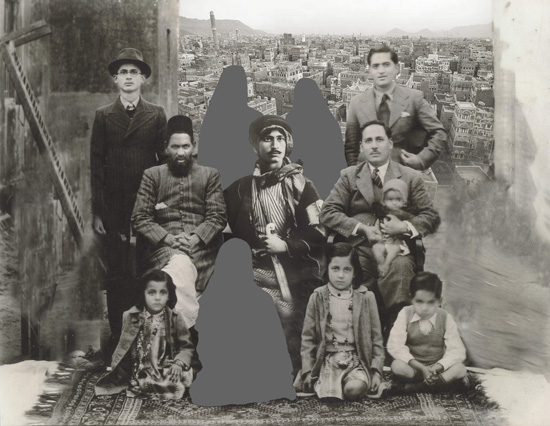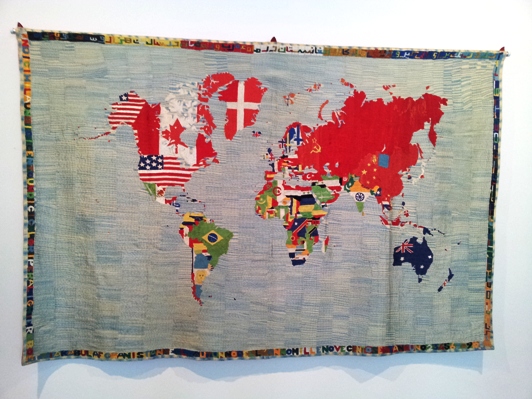Over the past years, most of my visits to contemporary art exhibitions have ended in disappointment. I consider myself an ex-curator: after my last show in 2015 I decided to step out of the art world. I usually tell people I enjoyed working with artists but increasingly disliked the art world, in both its commercial and institutional aspects. But this Biennale has left me inspired and hopeful for the art world – reviving my old hope that artists give creative expression to the deep undercurrents of collective development, giving an indication of where we are heading. This impression was left especially by “The Milk of Dreams” show curated by Cecilia Alemani, but surprisingly also by many of the national pavilions and some of the collateral events.
Continue readingCategory Archives: Art Analysis
Contemporary Art in the Gulf
Here is the full text of the book I published in 2013, called ‘Contemporary Art in the Gulf – an Introduction’.

And here is the Table of Contents:
7: Foreword
11: Contemporary Art in the Gulf
29: A Cultural History of the Arabian Peninsula
47: Saudi Arabia
69: Kuwait
87: Bahrain
99: The United Arab Emirates
119: Qatar
129: Oman
137: Where the Gulf is Heading
Article about Jonas Staal in Syria

Closing ceremony of the New World Summit in Derik, Syria
I published this article in the December 2015 edition of The Art Newspaper – with first a ‘news’ story on page 3, and then a feature on pages 58-59. Continue reading
‘Searching for Ancient Arabia’ – further information about the research project
A workshop will be held for all those interested in participating in this research project at the Downtown Campus (off Hamdan Street) of NYU Abu Dhabi on Tuesday 25 February, from 18:00 to 20:30.
For details about the workshop and registration see the bottom of this page.
Introduction to the research subject

- Stone Altar from Marib (5th – 4th Century BC) and Bronze Statuette of the warrior Ma’dikarib, South Arabia (6th century BC). These and all other photos and maps/diagrams on this page are reproduced from the book “Arabia and the Arabs from the Bronze Age to the Coming of Islam’ by Robert Hoyland, 2001. See below for ordering information
“Only a small proportion of the lore of the Arabs has come down to you. Had it reached you in its entirety, much scientific and literary knowledge would have been yours”
Searching for Ancient Arabia
I’m about to start a FIND fellowship at New York University Abu Dhabi called ‘Searching for Ancient Arabia’ and I’m looking for artists, curators, critics and scholars to participate in this research project.
What I would do if I became director of De Appel in Amsterdam
De Appel is the intellectual powerhouse of Amsterdam’s art world – or maybe it isn’t anymore, but it still has that reputation. It’s a non-commercial art space that offers a high-level (and world-renown) curatorial program, as well as a study program for gallery staff, it is the place to present contemporary art prizes and projects, and it organizes about 4-5 exhibitions a year.
De Appel is now looking for a director. This is my open application.
China China

Wang Qingsong was not the most controversial artist of Transfiguration, the official Chinese Pavilion. This giant photograph ‘Follow Him’ (2010) is apparently a critique on the accumulation of knowledge culture we live in.
Shortly after checking into the hotel, I went for a ‘short stroll’. Being back in Venice gave me a natural high, so I wandered further and further from the hotel, until I came to the metal gangway that hangs from the endless walls of a fort-like structure over the lagoon. I was just thinking “I really ought to go back” when I chanced upon an open door in the wall, leading to the giant exhibition ‘Voices of the Unseen, Chinese Independent Art’.
The installation of the exhibition was far from complete, many artworks still being half-wrapped. I wandered through hangar after hangar filled by what seemed at least a hundred Chinese artists. With one or two exceptions I found most of the art garish, commercial, unsurprising – confirming my bias of Chinese art. Seeing that the exhibition had been organized by the Guangdong Museum of Art I also wondered what ‘independent art’ might mean. It seemed to refer to ‘marketable art’.
The same team is behind the über-cool Guangzhou Triennial (the last two editions were called “Meta-Question: Back to the Museum Per Se” and “Farewell to Post-Colonialism”). It is all very depressing.
How big my surprise then when, the following day, I reluctantly visited the official Chinese Pavilion and discovered much more experimental and critical art – truly captivating. As if the Communist Party of China were still truly involved in the problems of society and self-criticism (jiantao) but has given up the illusion of progress under its reign – while the liberal bourgeoisie and capitalist class is celebrating its ascendancy with art that seems to deride any ideal with irony, even sarcasm.
This reversal of positions was truly perplexing, but alerted me to the danger of approaching the perils of ‘national representation’ too simplistically.
Quote from the Ideological Guide: The China Pavilion thus stakes a claim against the commodifying of dissent (…) Is it possible to give this nuance and subtlety a more permanent presence within the onslaught of the marketplace?
More reading: interesting background info on Global Times China
An Encyclopedia of National Representation: Review of the Venice Biennale, 2013

Alfredo Jaar’s iconic installation of the Giardini rising from the bottom of a pool only to disappear again quickly under the waves. Photo & composition by RK
Although I came to Venice to test and explore an artist’s project that fundamentally critiques the system of national representation at the Biennale, I must admit I enjoyed the national pavilions much more than the group show “The Encyclopedic Palace” and some of the collateral events.
Artists and curators asked to represent their country invariably grapple with the question how to ‘represent the nation’ and why they should be the ones called to do it. This intellectual quandary produces some interesting artistic results. Besides, this system does allow for a plurality of approaches to be present in the same event, notably empowering voices from the periphery.
I had my hands full with checking the national pavilions around town and relating what I saw to Jonas Staal’s Ideological Guide to the Venice Biennale. This guide, an app for android and apple-ware, describes each pavilion in detail, providing statistical data for the country, its conflicts and alliances, with a cover piece by an art professional well acquainted with that country, usually a ‘national’ (sic).
It has a navigation system, and although I usually spurn such devices, preferring to rely on my sense of orientation, knowledge of the city map and passers-by, I did use this one. Venice is a labyrinth. The precise GPS pinpointing is more useful than the Biennale’s map. So I managed to see quite a lot in two days, while maintaining the time for long exchanges with the artists and an occasional curator.
What follows are reflections about the national pavilions, interspersed with comments about the Biennale in general and personal perspectives on artists and shows that were not part of the national representation mechanism.
I will be adding the chapters on the national representations as I finish writing them.
All the Middle Eastern national presentations
Afghanistan in Documenta 13
Note: a very different, one-page graphic version of this article was published in the Belgian art magazine A Prior #23; see the article here. I published another article about this subject in the Indian art magazine Take On Art.
With fourteen Afghan artists and at least ten artists whose work reflects on this country, Documenta 13 is strongly flavored by Afghanistan. After Kassel, Kabul is the main location of Documenta (the others being Alexandria & Cairo, and Banff in Canada): 27 Documenta artists will show their work in the Queen’s Palace in Kabul’s Babur Gardens in an exhibition that opens on June 20. Continue reading
So-called ‘terrorists’ finally receive a democratic platform – as an art project

The setting for the New World Summit in Berlin’s Sophiensaele. The flags are all of organizations on the ‘designated terrorist lists’. Showing one of them might be a crime, but as a whole they qualify as an artwork. All photos courtesy of Jonas Staal and his team
I chaired a summit and helped curate a project designed by the Dutch artist Jonas Staal in Berlin on 4 and 5 May, as part of the Berlin Biennial. Continue reading


